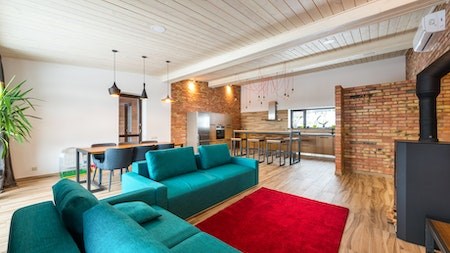According to Lightstone Property, the North West Province is one of the three provinces in South Africa – along with Gauteng and the Western Cape – where population growth exceeded the national average over the last 11 years. Despite this, local real estate experts report that this has yet to affect the local housing markets.
Key market areas
Within the North West Province, Klerksdorp, Potchefstroom and Rustenberg are the three largest towns in terms of properties formally registered at the Deeds Office. Lightstone Property reports that “[o]f the three, Rustenberg has more properties of higher value. Just over 30% are valued at more than R1m, compared to just over 20% in Potchefstroom and slightly more than 10% in Klerksdorp.”
According to Adéle Cillié, Broker/Owner of RE/MAX Legacy, the demand for homes seems to be constant. “The annual fluctuations are merely repeated. We have, however, experienced a spike in demand for low-cost housing, more specifically in the R400,000-R600,000 price range.”
Apart from that, Cillié notes that the average housing price has remained fairly constant at around R1 million. “We have had the odd high-priced property every now and then. In general, house price appreciation is an average of 5% per annum. But this differs a lot according to areas. Student housing has unfortunately not had a constant appreciation the last few years (following the disruptions around the pandemic) and fluctuate a lot according to where the student flat is situated in relation to the NWU.”
Affordability and demand dynamics
Louise Snyders, Broker/Owner of RE/MAX Exclusive shares similar experiences in the Klerksdorp property market and notes that the increase in interest rates have caused an affordability issue to develop.
“A lot of new listings are a result of this, which has caused price drops and lower offers being accepted. This has caused many buyers to look for a ‘bargain’. Buyers also take very long to decide on a property and often change their mind to rent instead,” she notes.
While the demand for full title security complex homes for an affordable price is increasing in Klerksdorp, Snyders comments that available stock is low.
“House prices increased for a year after COVID but have since returned to the original prices before COVID. Yet, sellers still expect a higher value but realise after a while that they are unable to achieve the prices they want.”
Overall, Snyders notes that there has been a definite decrease in demand for properties in Klerksdorp. “I have noticed that the only semigration into NW Klerksdorp tends to take the form of Medical Professionals or refugee-status buyers. There tends to be more semigration away from Klerksdorp to Mossel bay and other areas in Cape Town,” she notes.
Cillié, on the other hand, mentions that semigration has always played a role in house sales in her areas of operation. “Often families move to Potchefstroom specifically for our world-class sporting facilities, our university, and our nationally acclaimed schools. We see many people moving to the ‘countryside’ for various reasons. With Potchefstroom being approximately 150km from Johannesburg CBD and, with people working remotely, buyers prefer the lifestyle of the countryside that Potchefstroom has to offer.”
Sadly, Cillié notes that there has also been an increase in distressed property sales following the interest rate hikes. “There have been more buyers who took advantage of the lower interest rates, only to be caught off-guard and forced to place the property back into the market now,” she comments.
Despite this, Cillié still believes that Potchefstroom could be an ‘investment hotspot’ for future growth. “Because of our university, sporting facilities, and top schools, Potchefstroom will always be blessed with investment opportunities, and investors. The region has grown in leaps and bounds over the years. Potchefstroom's rich history is in itself a big drawcard. And, again, the fact that Potchefstroom is so close to Gauteng and is still a growing area, points to future growth and the possibility for greater returns on investment,” she notes.
“While the current market seems to be filled with highs and lows, we remain positive and committed. The buying and selling of property simply carries on. It is truly never ending regardless of interest rates, or any other adversity faced,” Cillié concludes.
Writer: Kayla Ferguson




